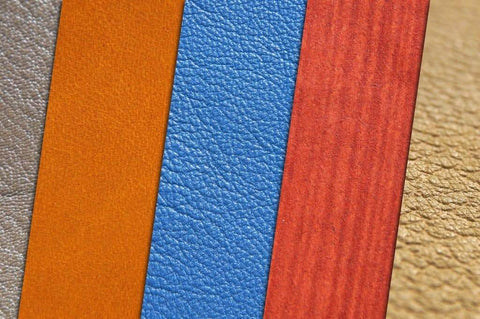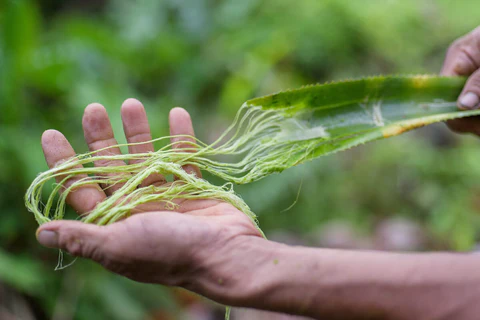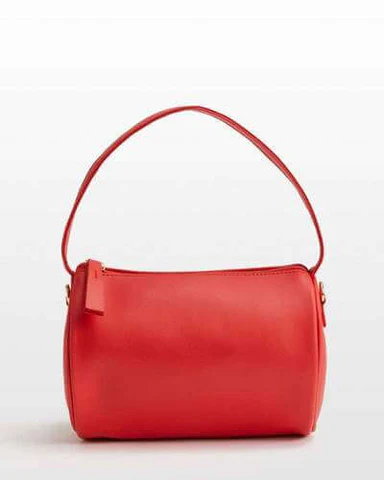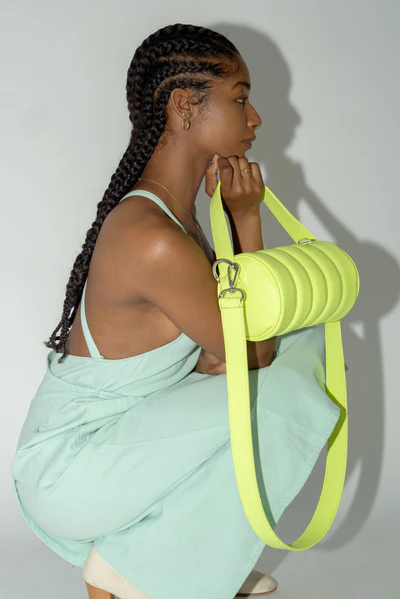From chic handbags to form-fitting trousers, vegan leather has emerged as an eco-conscious and animal-friendly alternative to traditional leather. Often outperforming its authentic counterpart, this material proves it can do everything real leather can—and usually better! The recent advent of innovative vegan leathers derived from recycled pineapple fibers, cork, plastic bottles, and even fungi has sparked some confusion about the distinction between faux leather and vegan leather. While they may sound similar, these terms don't refer to precisely the same thing. To understand the difference, let's dive into history. In the 1920s, the first faux leather surfaced at an American rubber plant. Known as "Naugahyde," this plastic-based material, or "pleather," was created in Naugatuck, Connecticut. Affordable and durable, it was designed to mimic genuine leather at half the price. Soon, Naugahyde and its derivatives became popular low-cost alternatives to real leather. In contrast, vegan leather has only gained prominence in the past couple of decades. Focused on ethical sourcing, vegan leather prioritizes sustainability over cost-cutting. Renowned designers like Stella McCartney and Rae Nicoletti are leading the charge by embracing eco-friendly materials that maintain both style and durability. While faux leather tends to emphasize imitation, vegan leather focuses on ethical production. For instance, biodegradable options like Piñatex, made from recycled pineapple leaves, not only last longer than conventional pleather but also offer a more realistic aesthetic. When comparing the longevity of faux leather versus vegan leather, the latter generally proves more resilient. This durability stems from its commitment to sourcing environmentally responsible and cruelty-free materials, ensuring products don’t contribute to landfill waste. For example, Piñatex, crafted from pineapple byproducts, represents a significant investment in sustainable fashion. Unlike fast-fashion faux leather items, which quickly fall out of style, vegan leather pieces like Piñatex provide lasting value and style. From Piñatex to grain-based biopolymers, vegan leather is gaining traction among high-end fashion brands dedicated to ethical practices. While faux leather primarily seeks to replicate real leather inexpensively, vegan leather champions sustainability, cruelty-free processes, and toxin-free materials. By opting for vegan leather, consumers support a movement rejecting harmful industry practices while embracing stylish, eco-conscious alternatives. Why settle for ordinary when you can have adorable and cruelty-free products like Hozen’s mini duffle bags? As consumers ponder the longevity of faux leather, it's essential to consider how these materials will evolve amid growing environmental concerns. While faux leather remains a key player in combating animal cruelty, vegan leather aligns more closely with sustainability goals. Looking ahead, collaborations between scientists and major brands aim to introduce even more innovative sustainable vegan leathers. Mycelium-based leather, for instance, emerges as a promising eco-friendly alternative. If you're keen on exploring vegan leather accessories, check out our ethically crafted collections today! Absolutely not! Though they share similarities, their philosophies differ entirely. Vegan leather transcends mere affordability; it embodies a movement advocating against wasteful practices within the leather industry and championing respect for animal life. Casual Dress,Striped Casual Dress,Summer Loose Dresses,Casual Cotton Striped Dress SHAOXING LIDONG TRADING CO.,LTD , https://www.lidonggarments.comWhat Sets Vegan Leather Apart From Faux Leather?

How Durable Is Vegan Leather?
Where Is Vegan Leather Making Waves?


What Lies Ahead for Vegan Leather?
So, Is Vegan Leather Just Another Name for Faux Leather?
Faux Leather vs Vegan Leather: Which Is Better?
Source: Libertyleathergoods
Source: hfscollective
Previous Article
Next Article
"



